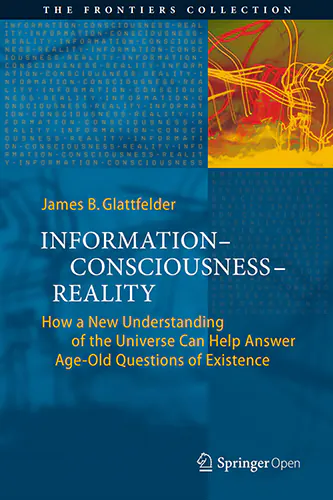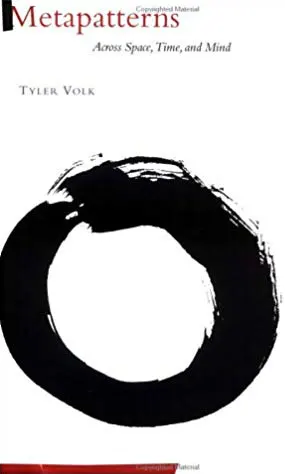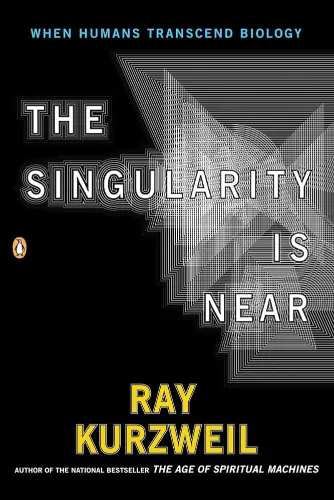The Library of Consciousness
of Consciousness
Appreciating Imagination
Join Terence McKenna in this weekend workshop as he takes us on an imaginative journey into the depths of human creativity. He explores psychedelics, virtual worlds, and shamanic states of consciousness, saying how an embrace of our imagination allows us to envision and manifest alternate realities beyond cultural conditioning. By cultivating our creative faculties with mathematical reasoning, intuition, and immersion in nature, he guides us toward transcending ideological limits into an enlightened future of compassion. Ultimately, breaking boundaries through the power of imagination will inspire us to reach new heights of understanding and connectivity.

Information — Consciousness — Reality
This open access book chronicles the rise of a new scientific paradigm offering novel insights into the age-old enigmas of existence. Over 300 years ago, the human mind discovered the machine code of reality: mathematics. By utilizing abstract thought systems, humans began to decode the workings of the cosmos. From this understanding, the current scientific paradigm emerged, ultimately discovering the gift of technology. Today, however, our island of knowledge is surrounded by ever longer shores of ignorance. Science appears to have hit a dead end when confronted with the nature of reality and consciousness. In this fascinating and accessible volume, James Glattfelder explores a radical paradigm shift uncovering the ontology of reality. It is found to be information-theoretic and participatory, yielding a computational and programmable universe.

Metapatterns
In the interdisciplinary tradition of Buckminster Fuller’s work, Gregory Bateson’s Mind and Nature, and Fritjof Capra’s Tao of Physics, Metapatterns embraces both nature and culture, seeking out the grand-scale patterns that help explain the functioning of our universe. Metapatterns begins with the archetypal patterns of space, both form-building and relational. Tyler Volk then turns to the arrows, breaks, and cycles that infuse the workings of time. With artful dexterity, he brings together many layers of comprehension, drawing on an astounding range of material from art, architecture, philosophy, mythology, biology, geometry, and the atmospheric and oceanographic sciences. Richly illustrating his metapatterns with a series of sophisticated collages prepared for this book, Volk offers an exciting new look at science and the imagination. As playful and intuitive as it is logical and explanatory, Metapatterns offers an enlightening view of the functional, universal form in space, processes in time, and concepts in mind.
Reality Isn't
What if the way our senses perceive reality is not at all representative of its true nature, but rather a highly abstracted interface? Donald Hoffman is working on a mathematical theory to find out.
The Omega Point as Eschaton
Frank Tipler presents an outline of the Omega Point theory, which is a model for an omnipresent, omniscient, omnipotent, evolving, personal God who is both transcendent to spacetime and immanent in it, and who exists necessarily. The model is a falsifiable physical theory, deriving its key concepts not from any religious tradition but from modern physical cosmology and computer science; from scientific materialism rather than revelation. Four testable predictions of the model are given. The theory assumes that thinking is a purely physical process of the brain, and that personality dies with the brain. Nevertheless, he shows that the Omega Point theory suggests a future universal resurrection of the dead very similar to the one predicted in the Judeo-Christian-Islamic tradition. The notions of “grace” and the “beatific vision” appear naturally in the model.
The Rites of Spring
Terence McKenna theorizes that ingestion of psilocybin mushrooms catalyzed the emergence of human self-reflection. He argues that psilocybin enhanced visual acuity and symbol processing in early hominids, leading to the development of human consciousness. Psychedelic plants can accelerate cultural change by deconditioning rigid mindsets, according to McKenna. He envisions a future where machines have consciousness and visible language communicates meaning directly. Ultimately, McKenna foresees the impending transformation of humanity through imagination and connection with the mysterious Other.

The Singularity is Near
Ray Kurzweil predicts a future where artificial intelligence surpasses human intelligence, triggering an era of rapid technological growth. He argues that advancements in AI, nanotechnology, and biotechnology will merge humans with machines, leading to superintelligent beings and even digital immortality. This "Singularity," expected by the mid-21st century, will radically transform society, solving problems like disease and aging while raising profound ethical questions. Kurzweil’s vision is bold, controversial, and thrilling—painting a future where humans evolve beyond biology itself.